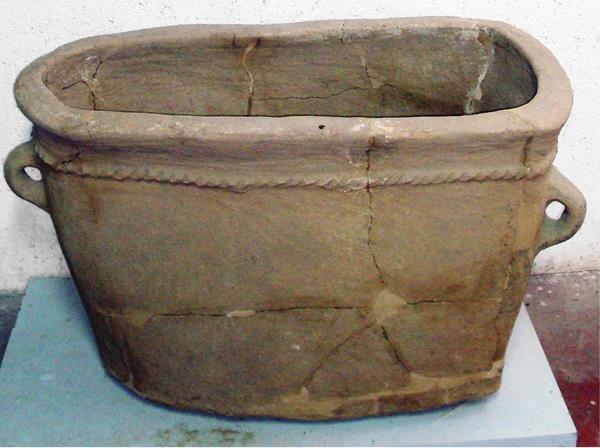
When I began studying a tub-shaped basin discovered years ago in the “elite zone” of the ancient Philistine city of Ekron (modern Tel Miqne), I assumed it was what it looked like—a bathtub. But the more I studied this artifact, the less I was convinced it was actually a bathtub. This put me on a quest. Several years and projects later, I may have some answers regarding the exact function of this and similar tubs.
Bathtubs, or bath-shaped vessels—typically made of ceramic, stone, or metal—are known from many sites across the ancient Near East. The earliest examples, dating to the 18th century BCE, come from the palace of King Zimri-Lim at the site of Mari in eastern Syria. Although basins of all shapes and sizes have been called “bathtubs” in the archaeological literature, I have identified three major types. The first is elliptical to hourglass-shaped, with four handles or lugs—two on either of the long sides. This type is also known on Cyprus, where the earliest examples date to the 13th century BCE.
The second type is rectangular or triangular, with one short straight wall opposite a rounded wall. The long walls are parallel or bulge outward in the middle, or sometimes angle inward. This type originated in Mesopotamia, where a similar vessel appears at the end of the second millennium. Most of the ones found in Israel and Jordan are of this type and date from the eighth through sixth centuries BCE, when the region was under heavy Assyrian influence.
Already a library member? Log in here.
Institution user? Log in with your IP address.

